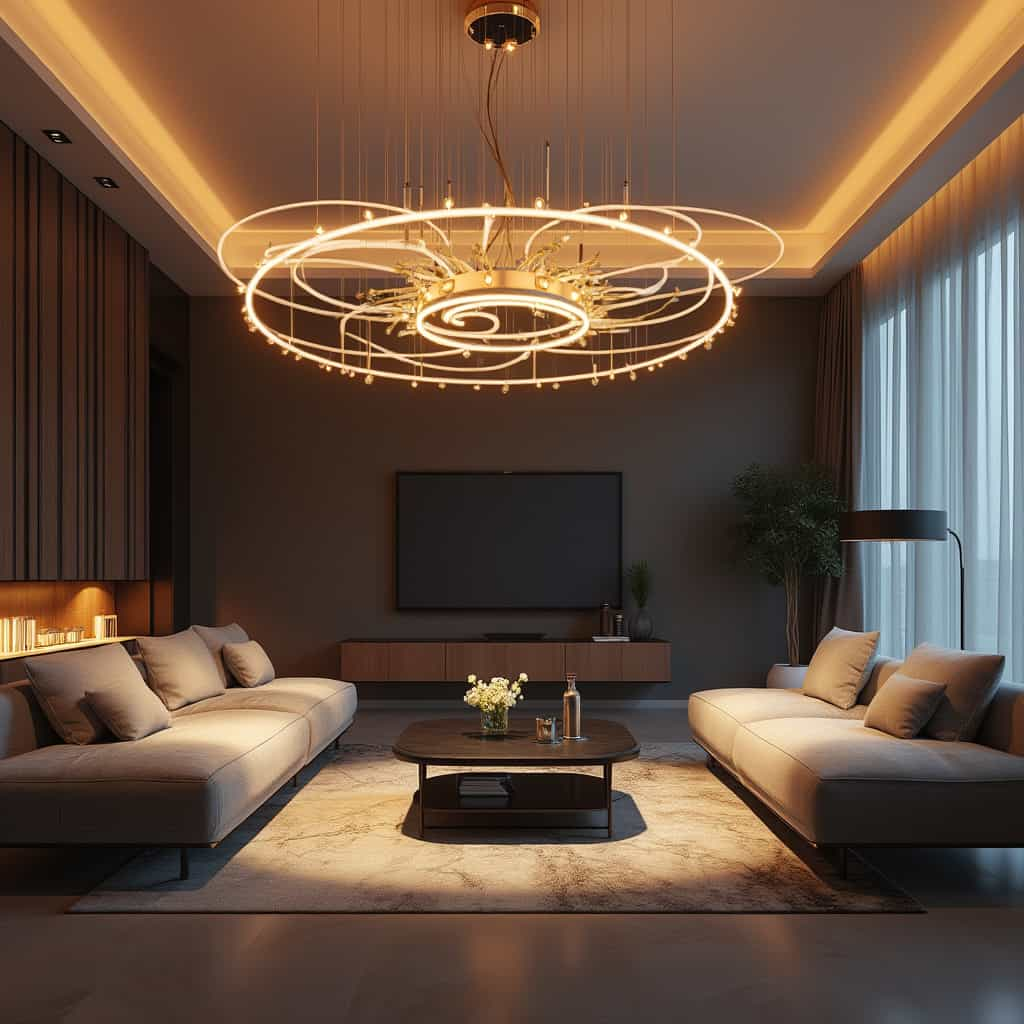Chandeliers have long been synonymous with elegance and sophistication, casting a gleaming spell over dining halls, foyers, and grand salons. As we step into the year 2025, the world of lighting is witnessing a revolution. This change is driven by the convergence of aesthetic innovation, technological advancement, and heightened consumer awareness about environmental sustainability.
The most striking trend is the embrace of smart technologies in lighting design. Chandeliers are no longer just stationary fixtures meant to illuminate a space; they are interactive hubs of lighting control, seamlessly integrating with smart home ecosystems. Imagine entering a room and having your chandelier adjust the intensity and tone of lighting based on time of day or activity. This level of customization is becoming increasingly mainstream, thanks to advancements in IoT (Internet of Things) technology.
Market leaders have been quick to adapt. Brands like Phillips Hue and Lutron are setting benchmarks by offering intelligent lighting options that are both energy-efficient and user-friendly. A survey conducted by the National Lighting Association indicates that 72% of consumers prioritize energy efficiency in their lighting choices, a figure poised to grow as climate awareness deepens globally.
Europe remains at the forefront of this lighting renaissance, not only in terms of sales but also innovation. Scandinavian countries, in particular, show a marked preference for minimalist designs that integrate effortlessly with their penchant for clean, airy spaces. The Kairo Smart Chandelier is a quintessential example, marrying Nordic simplicity with cutting-edge technology.
Across the Atlantic, the focus is slightly different. The North American market is witnessing a surge in demand for vintage-inspired models that incorporate modern functionalities. The Grand Deco Luxe Series, featuring Art Deco motifs with state-of-the-art LED settings, is captivating consumers looking to blend nostalgia with convenience.
Asian countries, especially China and India, are embracing eco-friendly designs. This market segment is characterized by models crafted from sustainable materials such as recycled glass and bamboo. A study published by the International Environmental Agency outlines that products with recycled components have seen a 45% increase in sales in these regions.
Japan, renowned for its avant-garde design ethos, is pioneering the use of OLED (Organic Light Emitting Diodes) in chandeliers, allowing for ultra-thin, flexible designs that challenge conventional aesthetics. According to a report by the Tokyo Institute of Technology, these OLED models are anticipated to dominate the high-end luxury market by the end of the decade.
Pricing remains a crucial factor influencing consumer choices. Fortunately, the proliferation of options has not only driven competition but also reduced costs. A well-designed, smart-enabled chandelier that might have cost over $1000 a few years ago is now available for less than $500, with no compromise on quality or features.
The buying experience has also evolved. Online platforms like Wayfair and Amazon offer extensive ranges with augmented reality (AR) features, allowing customers to visualize how a chandelier will look in their space prior to purchase. This technological integration has been particularly embraced by the younger demographics, who prefer digital convenience over traditional brick-and-mortar store visits.
Warranty offerings have become a unique selling point. Companies are increasingly providing extended warranties—some up to 10 years—reflecting their confidence in the durability and performance of their products. A recent survey indicated that a robust warranty is a decisive factor for 68% of buyers when selecting lighting fixtures.
Comments from lighting architects and designers echo the sentiment that the future of chandeliers is bright—not just in lumens, but in innovative potential. According to Jane Buckminster, a renowned lighting designer, ‘The chandelier is evolving from an ornament of status to a personalized expression of technology and art.’
For consumers seeking the best quality-price ratio, the key lies in exploring emerging brands who offer no-frills, high-quality products. Companies such as BeamBright and LuminoTech provide premium features without the hefty price tag, capturing a segment of cost-conscious but quality-demanding buyers.
Additionally, regional variations in design preferences can influence pricing and availability. For instance, ornate classical styles remain popular in the Middle East, with a preference for luxurious, handcrafted designs, while the Australian market values outdoor chandeliers reflective of the country’s love for verandah culture.
In conclusion, as we navigate through 2025, the world of chandeliers offers more diversity and innovation than ever before. Whether you seek traditional elegance or futuristic design, the current market trend caters to every taste and budget.
Ultimately, the choice of chandelier can significantly define the ambiance of a space, making the right decision crucial. Consumers are now empowered with a plethora of choices driven by personal style, technological preference, and sustainability considerations.
The future of chandeliers, it seems, is not just about illuminating rooms but illuminating lives—integrating style, technology, and sustainability in an unprecedented manner.
You may also like
The Future of Illumination: Guide to 2025’s Trending Lamps
As we approach 2025, the landscape of lighting is set to undergo transformative changes driven by technological advances, innovative designs, and shifting consumer preferences. This article explores the latest lamp models, market trends, and purchasing options, offering insights into the best quality-to-price solutions and geographical buying trends.
Carpets: Emerging designs and Smart Investments
Discover the latest trends and models in curtains and carpets for 2025, including innovative designs, market trends, and technological advancements. Explore the best quality-to-price ratios, new releases, and regional purchasing influences.
Curtains and Carpets: 2025 technological advancements and market dynamics
As we look towards 2025, the world of home decor is evolving with groundbreaking innovations in curtain and carpet designs. This article explores the latest trends, technological advancements, and market dynamics shaping the industry. Discover the best value-for-money options, regional purchasing trends, and expert insights into the future of these essential home decor elements.
Sofas and Armchairs: Technologies and Market Insights
This comprehensive article explores the latest innovations and trends in the world of sofas and armchairs. It covers cutting-edge models, market trends, technological advancements, and purchasing insights, tailored to different geographical preferences.
